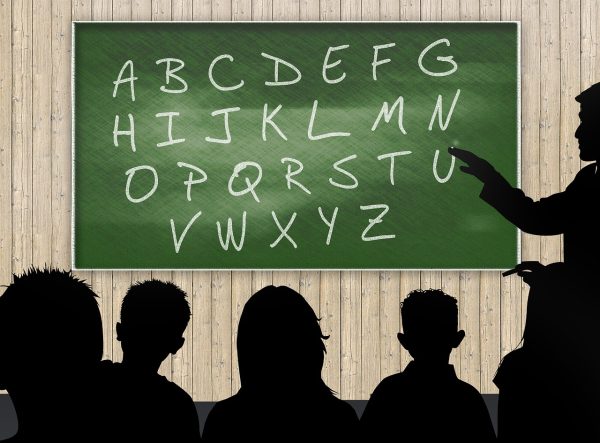Fun Activities to Teach Reading to Children: Engage and Educate
Fun Activities to Teach Reading to Children: Reading is an important skill that can open doors to a world of knowledge and opportunities. Learning to read is a complex process that involves both the development of basic skills and the development of a love for reading.
Teaching children to read can be a challenging and rewarding experience. There are a variety of activities that can be used to help promote literacy in the classroom. These activities can range from phonics activities to reading aloud to students, and beyond. By engaging students in these activities, teachers can help cultivate a love of reading and develop the skills necessary to become a successful reader.

How to Use Reading Aloud to Teach Main Idea
![]()
Reading aloud is an effective teaching tool for teaching main idea. It helps children to build an understanding of text structure and encourages them to think critically about the central themes of a text. Here are a few tips for using reading aloud to teach main idea.
Start by introducing the concept of main idea. Explain that the main idea is the main point of the text, often found in the first or last sentence. Ask questions to help students make connections to the text and explore the main idea. Ask them to think about what the text is mostly about and what the author is trying to tell them.
Next, model how to determine the main idea. Read a few sentences aloud and ask students to identify the main idea. Discuss how the main idea can be determined by looking for clues such as repeated words, phrases, or ideas. Provide students with examples of how to determine the main idea of a text.
Once students have a basic understanding of the main idea, have them practice with a variety of texts. Read a text aloud and pause periodically to ask students to identify the main idea. You can also have students work in pairs or small groups to practice identifying the main idea.
Finally, assess what students have learned. Ask them to summarize the main idea of a text. Provide feedback and support as needed.
Using reading aloud to teach main idea can be a great way to engage students and help them develop critical thinking skills. With practice and guidance, students will be able to identify the main idea of a text and understand its overall structure.
Creative Writing Activities to Enhance Reading Comprehension
![]()
Reading comprehension is a critical part of literacy that can be enhanced by creative writing activities. Here are some ideas that will help make reading comprehension more engaging for your students.
- 1. Create a Story Map: Have students create story maps for the stories they are reading. This will help them visualize the plot and characters as they read, which can help them better understand the story.
- 2. Writing Prompts: Writing prompts can help your students explore their comprehension of the story in more depth. Have them write a scene from a different character’s point of view or rewrite a scene in their own words.
- 3. Character Interviews: Have students create an interview with a character from the book. This can help them think about how the character would respond to different questions and can enhance their understanding of the character’s motivations.
- 4. Storyboards: Storyboards are a great way to help students understand the events in a story. Have them create a storyboard that visualizes different scenes or events from the book.
- 5. Dramatic Readings: Have your students perform a dramatic reading of a scene from the book. This will help them to better comprehend the dialogue and characterization.
Creative writing activities can be a great way to engage students and help them to better comprehend the stories they are reading. Try out some of these ideas to help your students get the most out of their reading.
Fun Ways to Give Students Practice with Context Clues
![]()
- 1. Word Scrambles: One fun way to give students practice with context clues is to make word scrambles. Take a sentence from a text and scramble up the words. Ask the students to unscramble the words to form the sentence and then identify the meaning of the words based on the context clues.
- 2. Word Searches: Another fun way to give students practice with context clues is to create word searches. Start by selecting a few words from the text and hiding them in a word search. Ask students to find the words and then use the surrounding words to identify the meaning of the words that were found.
- 3. Word Puzzles: Word puzzles are a great way to give students practice with context clues. Create word puzzles by printing out a few sentences from a text and then cutting up the sentences into individual words. Ask the students to put the words back together to form the sentences and then identify the meaning of the words based on the context clues.
- 4. Matching Games: Matching games are a great way to give students practice with context clues. Create matching cards with words from the text on one side and definitions on the other. Ask the students to match the words to the definitions and then use the context clues to identify the meaning of the words.
- 5. Hangman: Hangman is a great way to give students practice with context clues. Create a few sentences from the text, and have the students guess the words from the sentences. As they guess, have them use the context clues to identify the meaning of the words.
Giving students practice with context clues doesn’t have to be boring. With these five fun activities, students can have fun while also brushing up on their context clues skills.
Utilizing One-Word Vocabulary Activities to Enhance Reading Skills
![]()
Reading is an important skill for students to develop. It helps them to better understand the world around them and to be successful in their academic and professional life. Unfortunately, many students struggle to improve their reading skills. One way to make reading more enjoyable and to help students become better readers is to incorporate one-word vocabulary activities into their reading curriculum.
One-word vocabulary activities are activities that focus on the use of a single word. These activities can be used to help students develop their knowledge of the English language as well as to improve their reading comprehension. They can be used as a way to introduce new words, to review existing words, or to practice using words correctly in context.
One effective way to use one-word vocabulary activities is to have students play word games. These games can be as simple as guessing the definition of a word, or they can be more complex, such as coming up with synonyms or antonyms for a given word. These activities can help students develop their understanding of how words are used in different contexts and improve their ability to recognize and use words correctly.
Another way to use one-word vocabulary activities is to have students use the word in a sentence. This can help students learn how to use the word correctly and in the appropriate context. It can also help them to gain a better understanding of the meaning of the word and how it can be used to express an idea.
Finally, one-word vocabulary activities can be used to help students review and practice previously learned words. This can be done by having students create a story or poem using the words or by having them create a sentence or phrase using the words. This can help to reinforce their understanding of the words and can help them to better remember them.
No matter how one-word vocabulary activities are used, they can be a great way to help students become better readers. This type of activity can help to make reading more enjoyable and can help students to improve their reading comprehension. So if you are looking for a way to help your students become better readers, try incorporating one-word vocabulary activities into your reading curriculum.
Encouraging Students to Read for Fun in the Classroom
![]()
Encouraging students to read for fun in the classroom can be a challenge. Students are often more focused on academics and can be reluctant to engage in activities that don’t seem to have a direct connection to their academic success. However, reading for fun has many important benefits, and educators should strive to create a classroom environment that encourages students to read for pleasure.
One of the best ways to encourage students to read for fun is to make reading materials available and accessible in the classroom. This could include a library of books, magazines, and other reading materials that students can access during free time or after completing their work. Having a wide variety of materials available will ensure that all students can find something that interests them.
Another way to promote reading for fun is to read aloud to the class. Reading aloud is a great way to expose students to different genres and authors. It also helps to create a relaxed atmosphere in the classroom that encourages students to pick up a book and read for pleasure.
Additionally, educators can assign students independent reading tasks. For example, students could be asked to read a set number of pages each week and then discuss what they have read with the class. This will help to engage students in the reading process and make it more enjoyable.
Finally, educators should provide students with incentives to read for pleasure. This could include rewards such as special treats or extra credit for completing reading tasks. This will help to motivate students to read for fun and make it a more enjoyable experience.
Encouraging students to read for fun in the classroom is an important part of creating a positive learning environment. By making reading materials available, reading aloud to the class, assigning independent reading tasks, and providing incentives, educators can create a classroom environment that encourages students to read for pleasure.
Using Phonemic Awareness Activities to Help Children Love Reading
![]()
Reading is a critical skill for young children to acquire, and introducing them to the joys of books at a young age can help them develop a lifelong love of literature and learning. Developing phonemic awareness in children is an important step that can help them learn to read and write words. Phonemic awareness is the understanding of how the sounds of language work to create words. When children have a good understanding of phonemic awareness, they can identify and manipulate individual sounds in words, which can help them with reading and spelling.
The key to helping children develop phonemic awareness is to engage them with activities that are fun and interactive. Here are some activities that can be used to help children learn phonemic awareness:
- 1. Rhyming Games: Rhyming games are a great way to help children learn to hear and recognize the different sounds in words. You can ask children to think of words that rhyme with a given word, or you can play a game of “Guess the Rhyme” in which one person says a word and the other players have to guess the word that rhymes with it.
- 2. Phoneme Segmentation: This activity helps children learn to recognize the individual sounds that make up a word. For example, you can ask them to listen to a word and then break it down into its individual sounds, such as “c-a-t” for the word “cat”.
- 3. Sound Matching: This activity is similar to phoneme segmentation, but it requires children to match individual sounds with their corresponding letters. For example, you can ask them to match the sound “b” with the letter “b”.
- 4. Sound Blending: This activity helps children learn to blend individual sounds together to form a word. For example, you can ask them to blend the sounds “s-u-n” together to make the word “sun”.
By introducing children to phonemic awareness activities, you can help them develop the skills they need to become strong readers and writers. These activities are fun and engaging, and they can help children learn to love reading.
Frequently Asked Questions
![]()
1. What are some strategies for teaching reading?
- a. Provide explicit instruction in phonemic awareness, phonics, fluency, vocabulary, and comprehension.
- b. Read aloud to students to model fluency and comprehension.
- c. Incorporate technology into instruction.
- d. Have students practice reading with a partner or in small groups.
- e. Use a variety of texts including fiction, nonfiction, magazines, newspapers, and websites.
- f. Incorporate writing activities to support reading instruction.
2. What are some activities to support students in developing phonemic awareness?
- a. Have students identify and manipulate individual sounds in words.
- b. Have students blend sounds to form words.
- c. Have students identify rhymes and alliteration.
- d. Have students segment words into individual sounds.
- e. Have students identify beginning and ending sounds in words.
- f. Have students identify syllables or spoken words.
3. What are some activities to support students in developing phonics skills?
- a. Have students match letters to sounds.
- b. Have students identify letter patterns and how they influence pronunciation.
- c. Have students practice blending sounds to read words.
- d. Have students practice decoding words with unfamiliar spellings.
- e. Have students practice recognizing syllable types.
- f. Have students practice dividing words into syllables.
4. What are some activities to support students in developing fluency?
- a. Have students practice reading aloud with a partner or in small groups.
- b. Have students practice reading aloud with a teacher.
- c. Have students read aloud with an audio recording.
- d. Have students practice choral reading.
- e. Have students practice repeated readings.
- f. Have students practice sight word recognition.
5. What are some activities to support students in developing vocabulary?
- a. Have students identify words with similar meanings.
- b. Have students practice using context clues to figure out the meaning of words.
- c. Have students practice using a dictionary or thesaurus to look up unfamiliar words.
- d. Have students practice using root words to figure out the meaning of unfamiliar words.
- e. Have students practice using visual clues to figure out the meaning of unfamiliar words.
- f. Have students practice using analogies to figure out the meaning of unfamiliar words.
6. What are some activities to support students in developing comprehension?
- a. Have students practice summarizing texts.
- b. Have students practice retelling stories.
- c. Have students practice making predictions.
- d. Have students practice asking questions about a text.
- e. Have students practice making connections between texts.
- f. Have students practice making inferences about characters or events.
Conclusion: Fun Activities to Teach Reading to Children
![]()
In conclusion, activities to teach reading are an important part of a child’s education. They can help to build a strong foundation for literacy skills, encourage creativity, and foster a love of reading. By providing children with meaningful and engaging activities to teach reading, educators can ensure that their students are better equipped to succeed in school and beyond.



